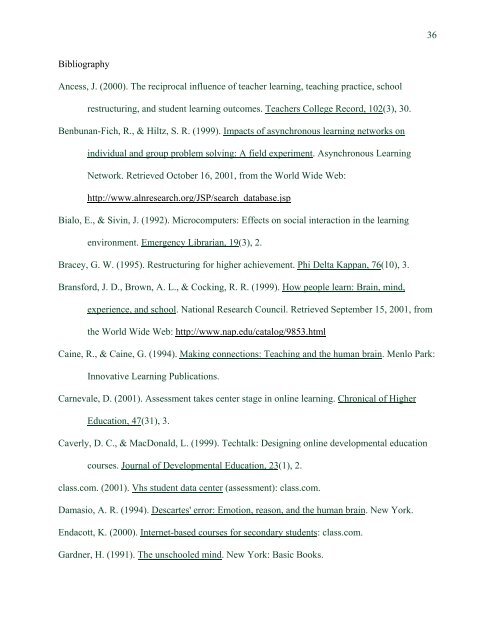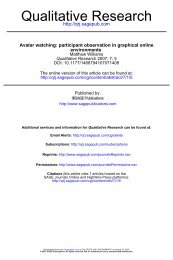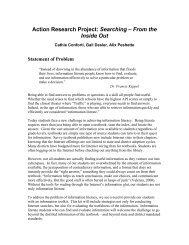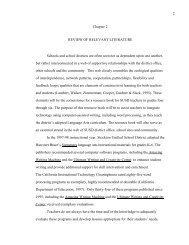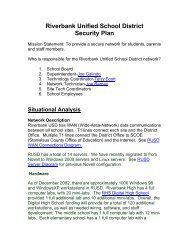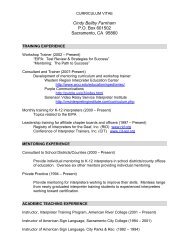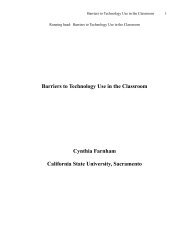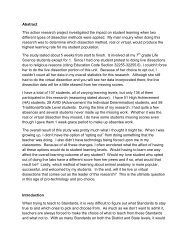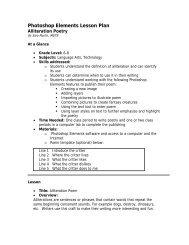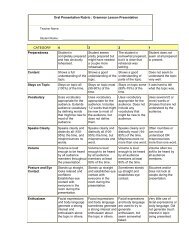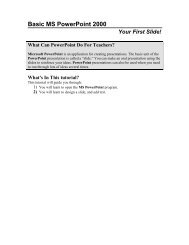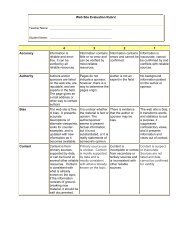Action Research Project: - iMET
Action Research Project: - iMET
Action Research Project: - iMET
Create successful ePaper yourself
Turn your PDF publications into a flip-book with our unique Google optimized e-Paper software.
36BibliographyAncess, J. (2000). The reciprocal influence of teacher learning, teaching practice, schoolrestructuring, and student learning outcomes. Teachers College Record, 102(3), 30.Benbunan-Fich, R., & Hiltz, S. R. (1999). Impacts of asynchronous learning networks onindividual and group problem solving: A field experiment. Asynchronous LearningNetwork. Retrieved October 16, 2001, from the World Wide Web:http://www.alnresearch.org/JSP/search_database.jspBialo, E., & Sivin, J. (1992). Microcomputers: Effects on social interaction in the learningenvironment. Emergency Librarian, 19(3), 2.Bracey, G. W. (1995). Restructuring for higher achievement. Phi Delta Kappan, 76(10), 3.Bransford, J. D., Brown, A. L., & Cocking, R. R. (1999). How people learn: Brain, mind,experience, and school. National <strong>Research</strong> Council. Retrieved September 15, 2001, fromthe World Wide Web: http://www.nap.edu/catalog/9853.htmlCaine, R., & Caine, G. (1994). Making connections: Teaching and the human brain. Menlo Park:Innovative Learning Publications.Carnevale, D. (2001). Assessment takes center stage in online learning. Chronical of HigherEducation, 47(31), 3.Caverly, D. C., & MacDonald, L. (1999). Techtalk: Designing online developmental educationcourses. Journal of Developmental Education, 23(1), 2.class.com. (2001). Vhs student data center (assessment): class.com.Damasio, A. R. (1994). Descartes' error: Emotion, reason, and the human brain. New York.Endacott, K. (2000). Internet-based courses for secondary students: class.com.Gardner, H. (1991). The unschooled mind. New York: Basic Books.


